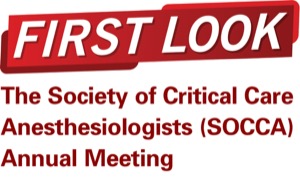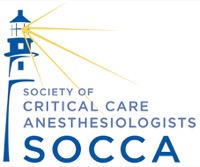
DENVER—Burnout and professional fulfillment vary among intensivists, and are associated with a multitude of factors including age and level of ICU coverage, according to the results of a recent survey.
Interestingly, the study found that COVID-19 pandemic-related ICU work did not have a significant effect on burnout, contrary to other reports.
“These are interesting results which show the structural incompetencies around the work we do,” said lead study author Shahla Siddiqui, MD, an anesthesiologist and intensivist at Beth Israel Deaconess Medical Center, in Boston.
During January and February 2022, Siddiqui and her colleagues conducted a survey of members of the Society of Critical Care Anesthesiologists (SOCCA), using the Stanford Professional Fulfillment Index (PFI) to grade levels of professional fulfillment and markers of burnout, such as work exhaustion and disengagement.

The research, which was undertaken by SOCCA’s research committee, was presented at its 2023 annual meeting.
“Instead of just measuring burnout, this instrument measures fulfillment as well as work exhaustion and disengagement from work,” Siddiqui said. “It is a balanced index.”
A total of 175 intensivists responded to the survey, 65% of whom were male, and 49% were between 36 and 45 years old. The majority of respondents (81%) worked in academic institutions, in cardiothoracic ICUs (64%), had critical care medicine fellows in training (74%) and delivered care using a collaborative ICU model (75%). Nearly all respondents reported caring for COVID-19 patients during the study period, and 39% had worked more than 15 weeks in the ICU during 2020.
The overall median PFI score—ranging from 0 (no fulfillment) to 24 (highest professional fulfillment)—was 17. Scores were higher among respondents who were more than 45 years of age, took call from home versus in-house, worked 15 or fewer weeks of full-time ICU coverage, or were responsible for unit medical direction.
Siddiqui noted that many reasons may be responsible for older clinicians experiencing a greater sense of job fulfillment. “It may be that they have less ICU calls, less coverage, wield greater control over their work lives or garner more respect,” she said, “or they may generally have more influence in their patients’ decision making.”
Generally, the COVID-19 pandemic, with its associated workload, was not seen to be a driver of burnout in this study. However, it also was not shown as causing increased levels of job fulfillment.
Another surprise for Siddiqui was that women did not report higher levels of burnout, when compared with their male colleagues.
“Medicine is more heterogeneous than people who are not in medicine think,” Siddiqui said, “and reasons for fulfillment and burnout are also very different between specialties. Critical care medicine is a male-dominated field. Although there are many women who are intensivists across the country and members of SOCCA, the factors related to burnout among them are different from those experienced by men.”
The findings of the report do show that potential solutions to mitigate burnout among intensivists—particularly focused on overall work burden, scheduling and overnight call strategies—are needed.
“These things should be studied longitudinally, with input from sociologists and health policy experts,” Siddiqui said. “This is a red flag that we are creating a work environment that may be hampering physicians from reaching the fulfillment they have desired in their professional calling.”
Key adjustments, attuned to the feedback generated by this study, could result in changes that would make the work environment for anesthesiology-trained intensivists more fulfilling.
“We want to reinforce the reasons why people go into critical care medicine,” Siddiqui said.
—Ethan Covey
Siddiqui reported no relevant financial disclosures.



Please log in to post a comment